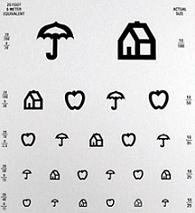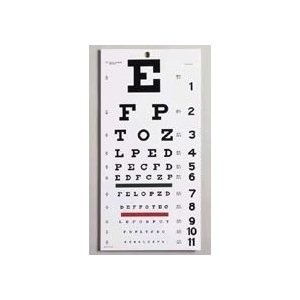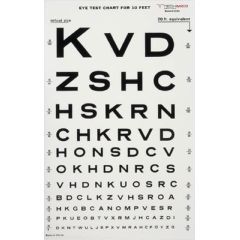|
Eye Test Chart
Do you have trouble seeing signs at a distance? Do you have trouble reading print at near? Do you have trouble distinguishing faces of people at a distance? You may need to have your vision checked using an Eye Test Chart, or Eyesight Chart. What can you expect from an Eye Test Chart?
A typical Eye Chart usually consists of rows of high contrast, black-on-white letters, numbers, or pictures, with each row becoming smaller.

The most common Eye Chart is the Snellen type, which was introduced in 1862 by the Dutch ophthalmologist, Hermann Snellen. This Eyesight Chart has remained the fundamental method for measuring your visual acuity during routine eye exams. Your visual acuity is determined by the smallest line of letters that you can read on the Eye Chart. Each eye is tested separately so that differences in vision can be discovered. One possible cause for a large difference in vision is Amblyopia. The chart has 11 rows topped by a single letter, which is usually the “E”. 
Vision standards have been developed based on a testing distance of 20 feet. This is where the “normal” vision of 20/20 vision was derived. A person with 20/20 vision can see a target which a person with “normal” vision can see at 20 feet. Eye clinics may not have the space to test vision in 20 feet long rooms and therefore use mirrors behind and in front of the patient’s chair in order to simulate 20 feet. Suppose you have 20/50 vision. This means that you see a target at 20 feet which a person with “normal” vision can see 50 feet away, which is much further away. In other words, the target has to be much bigger for you to see it that close. The problem with 20/20 vision is that it does not take into account many aspects of real-world such as varying contrast levels and High-Order Aberrations. These real-world aspects have driven the development of testing that can be used to better assess your quality of vision such as:
Other eye doctors prefer using Jaeger notation for near vision testing. Jaeger visual acuity can easily be converted into Snellen equivalents, with the best vision being J1, which denotes 20/20 vision. |





